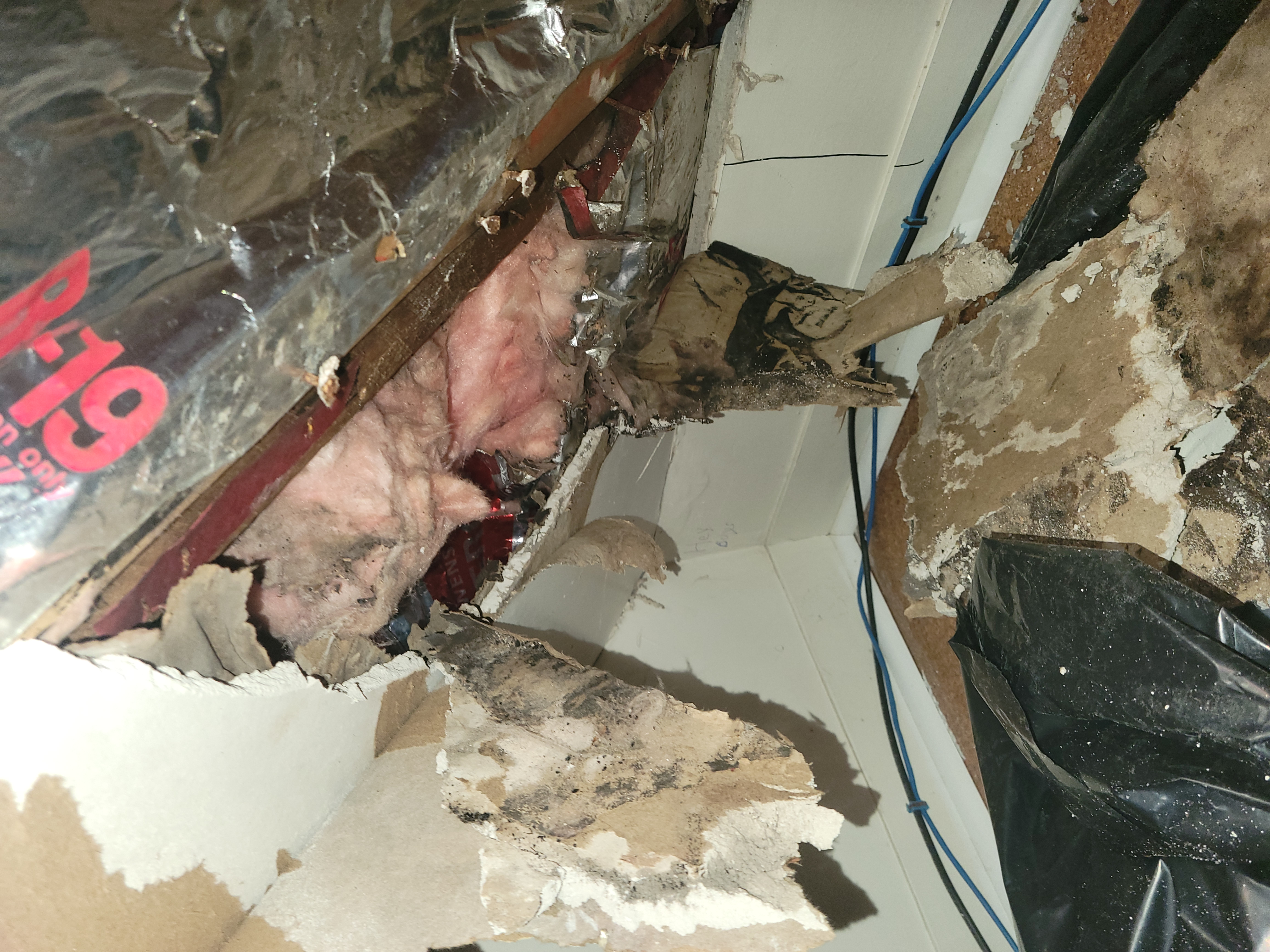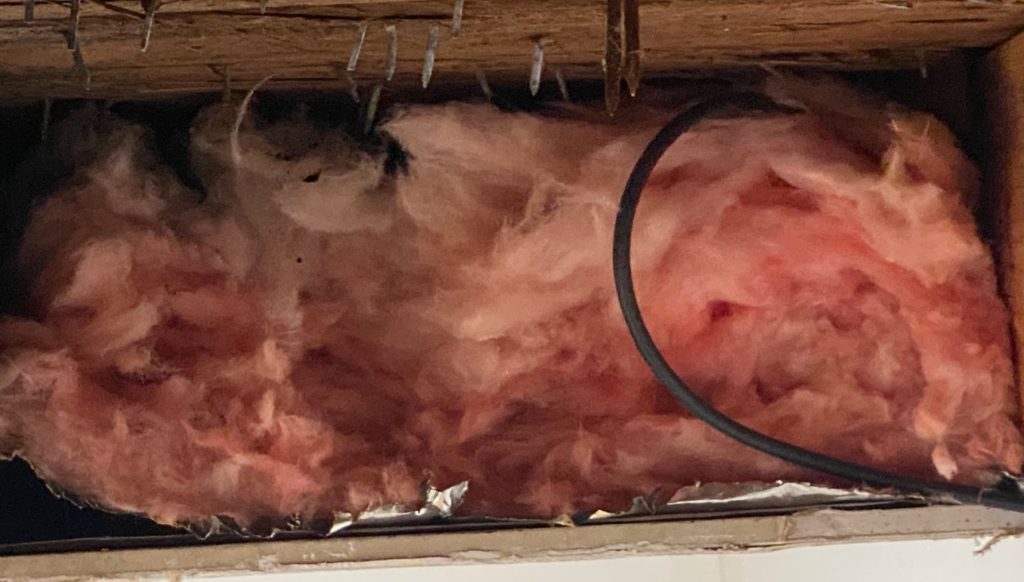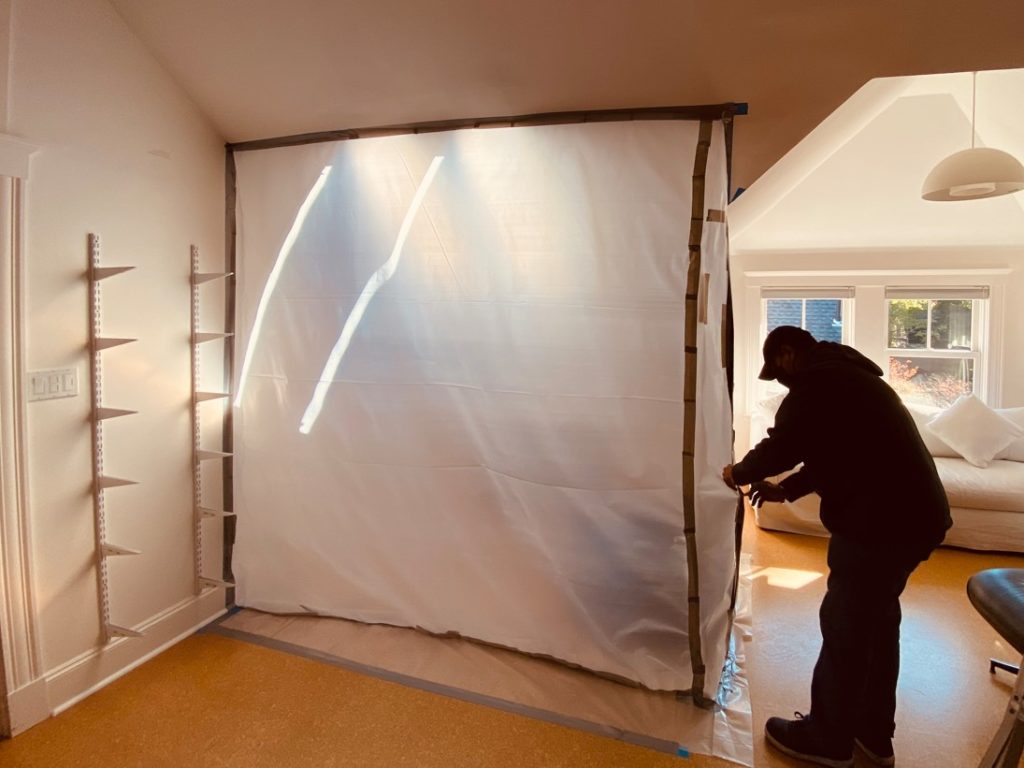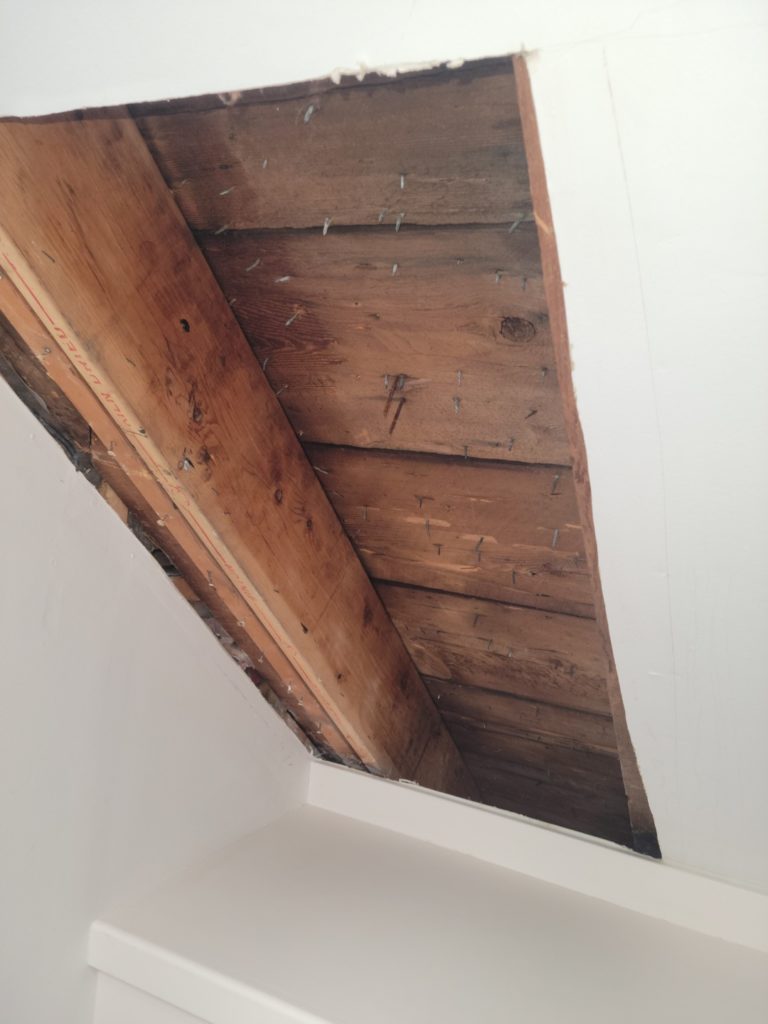“You better come over here…. we have a problem in the closet” And with that simple statement from my wife our odyssey into mold removal and remediation began.
We’ve had a rainy fall here in the Northeast and after a particularly strong multi-day storm, we discovered a significant leak in a knee wall closet on the third floor of our 100-year-old house. Hence the “We have a problem” observation. We don’t go into that closet often but luckily my wife needed something and that’s when she discovered some very wet interior walls with black mold visible. We’re not sure how long the walls were wet, but it was at least 24 hours, long enough for mold to start to grow.

We knew we needed to move quickly to prevent the mold from spreading further so we called a mold remediation company. This was 4pm on Friday afternoon but luckily a company agreed to come out the following Monday. In the meantime, we started removing as much mold as possible and drying out the wall. We are not professional mold remediators but based on some google research and common sense, we devised a plan.
We put on masks, and gloves and cut a large-ish hole in the wet drywall where most of the mold was. The goal here was to provide an avenue for the wall to dry. We were also super curious to see how our “inherited” fiberglass insulation was holding up. We were not impressed. It was sopping wet and had visible mold all over it. It had also slumped down into the wall cavity. The sheetrock was also in tough shape, though the mold was not as prominent. The underside of the roof deck and the ceiling joists were wet to the touch. And it had a very strong musty odor. We pulled out as much junk as possible and immediately placed it all into a sealed garbage bag. We then vacuumed and wiped up all the water. We then washed the walls with a water bleach solution to remove any more surface mold. After sponging up any remaining water, we placed a clean dehumidifier right in the closet. We closed up the third floor to minimize any further mold spread.

(We also contacted a roofer to find and fix the actual water intrusion in our roof. Spoiler alert – old flashing around a skylight. Stay tuned for a separate blog on that.)
Luckily the next few days were dry and warm. We kept running the dehumidifier, making sure the closet didn’t get too warm as that can in turn create moisture. By Monday everything looked and felt dry except for the fiberglass insulation which was still damp.

Our mold remediation “expert” arrived on Monday and did a very cursory inspection of the leak with what appeared to be a glitchy moisture-reading device. He immediately started in with the “this could ruin your whole house” warning, which while true, seemed a bit severe. After about 10 mins he estimated that at least half the walls needed to be ripped out. He flippantly quoted us “at least $10k but could be much more” but told us not to worry because insurance would cover all this. He was pushing for a down payment on the spot. Needless to say but we knew we needed another opinion. So back to Google-ing “mold remediation” and we found another local company that was able to come that day. This company was much better.
Their expert really was an expert. He quickly surmised that while the exterior mold looked mostly gone it was likely still concentrated in the walls as they were still wet (though not to the touch). Instead of quoting us some huge project, he suggested we get an air quality test to measure the extent of the mold problem accurately. That would help them understand how much work was required. So in short order, we had an air quality company come by. They too took moisture readings and discovered that the leak had run down into our son’s room on the second floor. Not good news. They did a series of tests for mold in the air and on the surface. Within two days we had results – Above Normal to Severe Chaetomium and Stachybotrys in that closet but nothing serious in our son’s bedroom. Phew.

With that, the mold remediation company went to work. First, they sealed off the entire area with plastic and then cut out the drywall and removed the still-wet and moldy fiberglass insulation. They cleaned everything with a HEPA vacuum, fogged the area with an anti-microbial, scrubbed the interior framing, and then ran an air scrubber for 24 hours. Pretty thorough work. It may have been overkill but we had the air quality team return for follow-up tests. All the mold was gone except for some trace amounts of a plant pathogen called Ascospores, likely due to leaf litter in our yard. So with the mold removed and the roof intrusion fixed (or so we thought!) we got started on repairing the walls, including replacing the old fiberglass with Havelock Wool. Stay tuned for the next blog post covering all that as well as the What We Would Have Done Differently!


Love this stuff